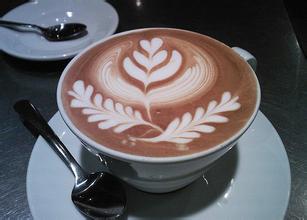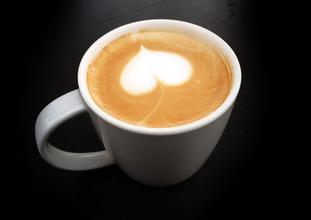Description of West Java Honey Flavor of Coffee beans introduction to the region and country of the manor
Brazilian coffee beans
Now, after discussing the three major treatments of coffee, it is not clear which treatment has the best flavor for coffee beans. They are all the process of turning coffee fruits into raw coffee beans, including peeling, pulp and pectin layer removal or retention, drying and other processors. And all kinds of treatments are influenced by the region, traditional habits or market demand, they develop in tradition and innovation, summer is as sweet as first love, and YG offers you a cup of honey-like Aimei coffee. Jackfruit, dried carambola. Countless aromas of tropical fruits leave you in the flower orchard where honey is not added to the coffee beans treated with honey, but the original flesh is preserved through natural fermentation to absorb the "positive energy" of full sunlight to create a richer taste and a honey-like flavor. After the coffee beans are dried and the water content is reduced to 10%-12%, the shelling process can be carried out in order to remove the seed shell and the residual fermented pulp, and the drying process for producing raw beans is to put the shell beans with pulp directly on the drying rack or cement floor. it is dried for different days because of how much of the flesh is preserved (as shown above). Such as the sun method is similar, during the need to turn the coffee beans on time to avoid accumulation time is too long, resulting in excessive fermentation, easy to produce corrupt flavor of the early picking and flotation process is similar to the water washing method, while the mechanical peeling link is very different. The washing method requires the pulp to be removed to ensure its "cleanliness", while the mechanical peeling process of honey treatment can adjust the caliber of the peeling machine to determine how much pulp to remove. The whole is divided into three categories, as shown below (from left to right):
1. Coffee with more than 50% pulp removed is called "yellow honey" because the pulp is thin on the surface and yellowish brown after subsequent fermentation.
two。 If the coffee with less than 20% pulp is removed, the pulp on the surface is thicker, and the subsequent fermentation turns crimson, which is called "red honey".
3. Coffee, which hardly scrapes the flesh, is called "black honey" when it is fermented black.

Important Notice :
前街咖啡 FrontStreet Coffee has moved to new addredd:
FrontStreet Coffee Address: 315,Donghua East Road,GuangZhou
Tel:020 38364473
- Prev

Introduction to the characteristics of Costa Rican Yellow Honey Coffee Bean Flavor description
Costa Rican coffee Costa Rica has won the recognition of coffee gluttons through honey-treated coffee beans, but it is also closely related to Costa Rica's superior geographical and climatic conditions, and the selection of Arabica varieties of coffee. Costa Rica's high-quality coffee beans are called SHB, and the quality of hard beans (HB) and slightly hard beans (SH) are delivered in turn.
- Next

Colombia Coffee Bean Flavor Taste Manor Area Quality Grinding Scale Introduction
Colombia Coffee Bean Introduction The pure taste of Colombia coffee is inseparable from the hard work of local growers, in addition to the natural environment with the most favorable conditions for coffee growth. In Colombia, coffee is cultivated on 1.07 million hectares, there are about 302,000 coffee plantations in the country, and 30 to 40 per cent of the rural population depends directly on coffee production. Colombia
Related
- Detailed explanation of Jadeite planting Land in Panamanian Jadeite Manor introduction to the grading system of Jadeite competitive bidding, Red bid, Green bid and Rose Summer
- Story of Coffee planting in Brenka region of Costa Rica Stonehenge Manor anaerobic heavy honey treatment of flavor mouth
- What's on the barrel of Blue Mountain Coffee beans?
- Can American coffee also pull flowers? How to use hot American style to pull out a good-looking pattern?
- Can you make a cold extract with coffee beans? What is the right proportion for cold-extracted coffee formula?
- Indonesian PWN Gold Mandrine Coffee Origin Features Flavor How to Chong? Mandolin coffee is American.
- A brief introduction to the flavor characteristics of Brazilian yellow bourbon coffee beans
- What is the effect of different water quality on the flavor of cold-extracted coffee? What kind of water is best for brewing coffee?
- Why do you think of Rose Summer whenever you mention Panamanian coffee?
- Introduction to the characteristics of authentic blue mountain coffee bean producing areas? What is the CIB Coffee Authority in Jamaica?

